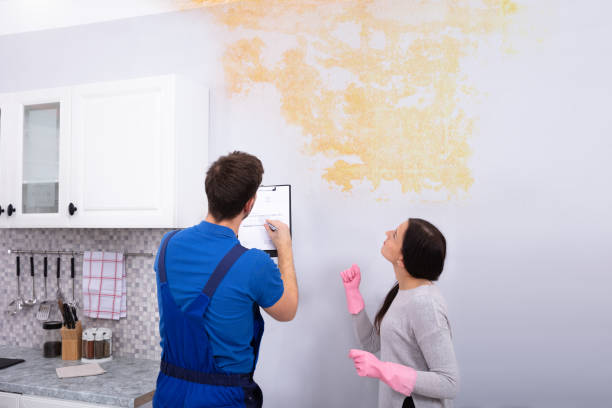Common Causes of Water Intrusion and How to Prevent Them
- housespecialist
- Mar 18
- 3 min read
Water intrusion into homes or buildings is a significant issue that can lead to severe structural damage, mold growth, and costly repairs. Understanding the common causes of water intrusion and implementing preventive measures can help protect your property and maintain a safe living environment. In this blog, we will explore various sources of water intrusion, including roof leaks, plumbing issues, foundation cracks, improper drainage, weather-related factors, and condensation. We will also discuss effective prevention strategies to safeguard against these potential threats.
Roof Leaks

Roof leaks are a common cause of water intrusion and can result from damaged shingles, flashing, or poorly installed roof elements. Over time, even minor roof damage can escalate, allowing water to seep into the building and potentially harming interior structures. Preventing roof leaks involves regular inspections and maintenance. Replace missing or damaged shingles promptly, and ensure that flashing around chimneys, vents, and dormers is secure and intact.
Additionally, clean gutters regularly to prevent blockages that can lead to water overflow and roof damage. By addressing these issues proactively, you’re not only preserving your roof’s integrity but also protecting your ceiling from water damage, which can lead to costly repairs. Investing in quality roofing materials and professional installation can further reduce the risk of leaks.
Plumbing Issues
Faulty plumbing is another frequent culprit of water intrusion. Leaking pipes, broken fixtures, and appliance malfunctions can cause significant water damage if not addressed promptly. Regular maintenance and inspections of plumbing systems are essential to prevent leaks. Check pipes for signs of wear, corrosion, or leakage, and replace any damaged components immediately. Install pipe insulation to protect against freezing in colder climates, and consider using smart leak detectors to receive real-time alerts of plumbing issues. Additionally, ensure that water-using appliances, such as washing machines and dishwashers, are properly connected and maintained. If a leak does occur, seeking fast water damage restoration by Serclean can help minimize damage and restore your home efficiently.
Foundation Cracks
Cracks in the foundation of a building can lead to water intrusion, particularly during heavy rainfall or flooding. These cracks may develop due to settling, ground movement, or inadequate construction. To prevent water from entering through foundation cracks, inspect the foundation regularly and seal any visible cracks with appropriate waterproofing materials. Install a sump pump in basements to manage excess water and prevent flooding. Ensure proper grading around the foundation to direct water away from the building, and maintain adequate drainage systems to handle runoff effectively.
Improper Drainage
Improper drainage around a property can result in water pooling near the foundation, leading to seepage and water intrusion. Effective drainage is crucial to prevent water accumulation. Ensure that gutters and downspouts are clean and functioning correctly, directing water away from the building. Install French drains or other drainage systems around the foundation to manage excess water. Regrade the landscape if necessary to create a slope away from the building. Regularly check drainage systems for blockages and ensure they are capable of handling heavy rains.
Weather-Related Factors
Weather-related factors such as heavy rains, snowmelt, and severe storms can lead to water intrusion, especially if the property is not adequately prepared. To prevent weather-related water damage, ensure that your property is well-maintained and weather-proofed. Install storm windows and doors to protect against heavy rains and strong winds. Regularly check the roof and exterior walls for damage, and repair any issues promptly. Clear snow and ice from gutters and roofs during winter to prevent ice dams and water infiltration. Investing in weather-resistant building materials and improvements can significantly reduce the risk of water intrusion.
Condensation
Condensation may not seem as threatening as other causes of water intrusion but can lead to significant damage over time. Condensation occurs when warm, moist air comes into contact with cold surfaces, leading to moisture buildup. To prevent condensation-related water intrusion, maintain proper ventilation and air circulation within the property. Use dehumidifiers to control indoor humidity levels, particularly in areas prone to moisture, such as basements and bathrooms. Insulate cold surfaces, such as windows and exterior walls, to reduce temperature differences and minimize condensation. Regularly inspect and clean HVAC systems to ensure efficient operation and prevent condensation buildup.
Conclusion
Water intrusion can originate from multiple sources, including roof leaks, plumbing issues, foundation cracks, improper drainage, weather-related factors, and condensation. Understanding these common causes and implementing effective prevention strategies is crucial to protect your property from water damage. Regular inspections, maintenance, and timely repairs of roofing, plumbing, foundations, and drainage systems are essential preventive measures. Additionally, investing in quality building materials and weather-proofing improvements further reduces the risk of water intrusion. By proactively addressing potential threats, homeowners can safeguard their properties and maintain a safe and dry living environment.



Comments